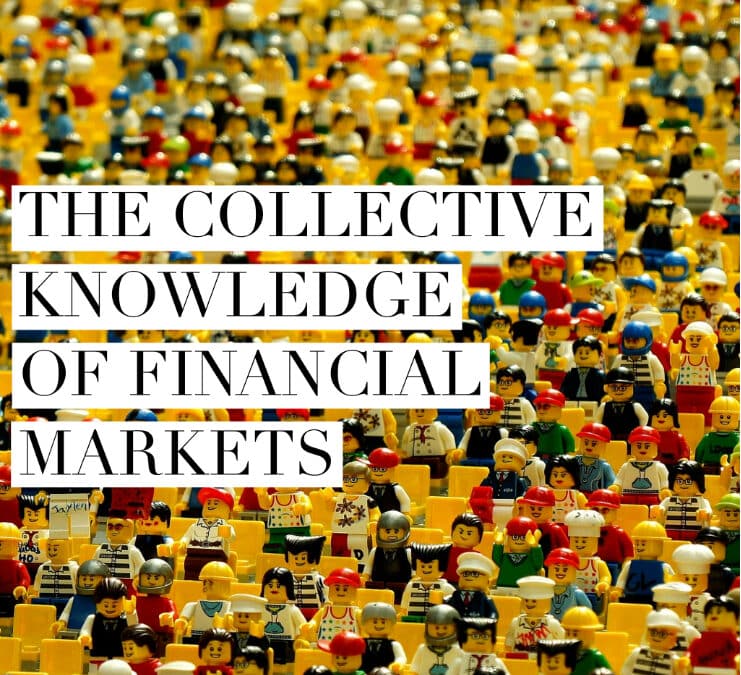How much does the cow in the picture below weigh? NPR’s Planet Money asked the internet this question and got 17,205 responses. The average of all the responses was 1,287 pounds and the actual weight was 1,355 pounds. The average was off by only five percent.

Source: NPR Planet Money
This experiment, which was originally conducted in 1906 by Francis Galton, is a perfect example of the power of collective knowledge – together we know more than we do individually.
Every person’s guess reflects their unique knowledge and life experiences. Perhaps some participants knew the average weight of a cow is 1,500 pounds. Others may have looked at the man near the cow and determined that the cow was at least ten times his weight. Every person’s estimate might have flaws, but each person’s guess also has a bit of information in it.
James Surowiecki explains this further in his book The Wisdom of Crowds:
“If you ask a large enough group of diverse, independent people to make a prediction or estimate a probability, and then average those estimates, the errors each of them makes in coming up with an answer will cancel themselves out. Each person’s guess, you might say, has two components: information and error. Subtract the error, and you’re left with information.”
Surowiecki describes a related experiment of group intelligence by Jack Treynor. Treynor asked 56 participants in his class to independently provide estimates of the number of jelly beans in a jar. The average guess was 871 and the actual amount was 850 – meaning the crowd was only a little more than 2% off the correct value.
This jelly bean experiment has been repeated several times, with the crowd’s aggregate average usually being within 2-5% of the actual number. The larger the number of guesses, the more likely the average will be closer to the actual number.
The collective knowledge of financial markets is one of the reasons that market prices largely (although not perfectly) reflect all available information and expectations of the future. Millions of market participants buy and sell securities around the world. The new information each buyer and seller brings to the markets help set prices. The errors in judgment from “dumb” money opinions offset each other as do the errors made by “smart” money. What you’re left with is information, and prices adjust according to each bit of new information.
Because the future is uncertain and we can’t know what the next bit of new information, it is reasonable for most people to accept current prices as very close to accurate. If you believe the market is significantly mispriced – dramatically overvalued or undervalued – then you are pitting your knowledge or hunches against the combined knowledge of millions of other market participants.
The wisdom of crowds make it extremely difficult for most active managers to consistently outperform the market and it is nearly impossible to predict who the winners will be in advance.
Let’s go back to the jelly bean experiment for a brief moment. If this experiment were run with the same group ten times, each time one or two people are likely to have better guesses than the rest of the group. However, the one or two people with the best guesses are also likely to be different each time, and there is very little ability to predict which one or two people will have the best guess.
There are a few implications to draw from this example. For starters, outsmarting the group has a lot to do with luck, particularly when participants are highly skilled. In addition, you shouldn’t try to outsmart the market unless you have a clear edge that shifts the long run odds in your favor – many people think they have an edge, but most do not.
What about bubbles, panics and manias? Ed Thorp calls “the flip side to the wisdom of crowds the lunacy of lemmings.” In order for collective decision making to be useful, independence and diversity of opinions are crucial. Usually independence and diversity of opinion go missing during bubbles, panics, and manias – today’s market environment is a far cry from those conditions.
Rather than compete against the vast knowledge of the world’s market participants, the majority of investors should harness the knowledge of markets and focus on things that can be controlled such as risk exposure, costs, taxes and investment behavior.














